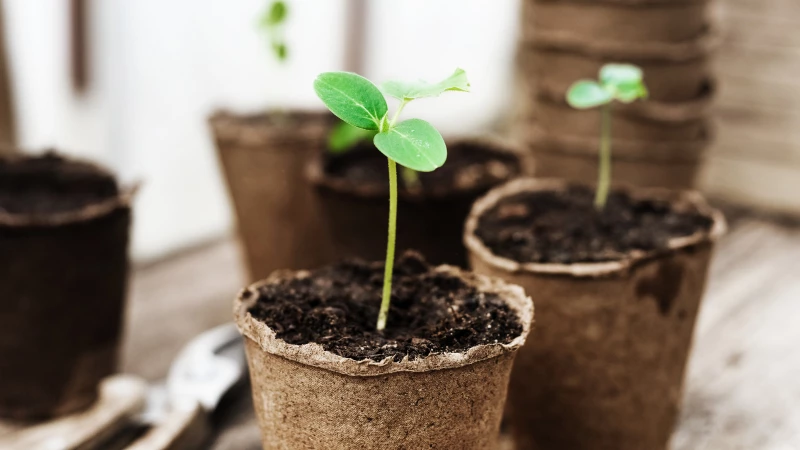As the seed starting season kicks off, it's crucial to ensure that the sprouting seeds receive the right amount of water. Overly wet soil can lead to the decay of delicate seedlings, while dry conditions can also be detrimental to their growth. To provide an optimal environment for seedlings to thrive, it is recommended to use a sterile moisture-retaining planting medium, such as a seed starting mix available in stores. By following a proper watering schedule, these mixes can maintain moisture levels without causing waterlogging around the roots. The key is to water consistently so that the planting medium remains as moist as a wrung-out sponge. The frequency of watering will vary based on the growing conditions and will need adjustment as the seedlings develop.
Indoor seedlings
It's much easier to control soil conditions when starting seeds indoors. You control the temperature, humidity, light, and water. The biggest challenge for indoor seedlings is keeping the soil moist but not wet. Those little roots don't tolerate much variation in conditions, so a container with good drainage is vital. In case you get overzealous with your watering, a loose seed starting blend can help self-correct by releasing excess moisture.
For seedlings started in covered containers, like indoor greenhouses, the need for watering is minimal while they are covered since they are in a self-contained environment. However, when it's time to take the cover off, be sure to keep a close eye on the soil conditions, ensuring it stays consistent while the seedlings adjust to their new growing conditions. If you're starting seeds in an open container, it won't take long to figure out how quickly the seed-starting mixture dries out. Check your seedlings every day, and gently add water if the top of the blend is dry.
Outdoor seedlings
While it would be nice to be able to say, "Water your seedlings every X number of days," there are too many variables that determine if it's time to water. The key to success is keeping a close eye on your young plants. Keen attention is crucial at the beginning of the planting process because consistent observation will help you see how quickly your planting medium dries out. For example, if you are starting seeds in a covered planter, water will evaporate much less quickly than if they are exposed to the air in a home with low humidity. Indeed, many factors determine soil moisture, but the biggest ones are whether they are growing indoors or out.
For those embarking on the journey of starting seeds, whether in a greenhouse or outdoors, it's essential to be prepared for all types of weather conditions. Seedlings grown in a greenhouse are particularly susceptible to drying out quickly due to the combination of high humidity and intense sunlight, which accelerates evaporation. To prevent your young plants from suffering, it's crucial to check them daily and closely monitor the weather patterns. In a small greenhouse, temperatures can soar rapidly above 60 degrees on sunny days, necessitating proper ventilation to avoid overheating and potential damage to your plants. Investing in a Bluetooth outdoor thermometer, such as the Govee Bluetooth Hygrometer Thermometer available for $15 on Amazon, can be a valuable tool in managing the heat levels within your greenhouse.
In contrast, seedlings started outdoors tend to develop greater resilience early on as they are exposed to natural elements right from germination. If your young plants are in containers, it's advisable to water them whenever the top layer of soil appears dry. On the other hand, if the seeds have been directly sown in the ground, you can wait to water them until the soil is dry up to an inch below the surface, unless signs of wilting become evident. Some seeds with shallow roots may require more frequent watering. Tailor your watering schedule based on the specific needs of your seeds and their starting conditions, ensuring that the soil remains consistently moist to give your garden the best possible start.









